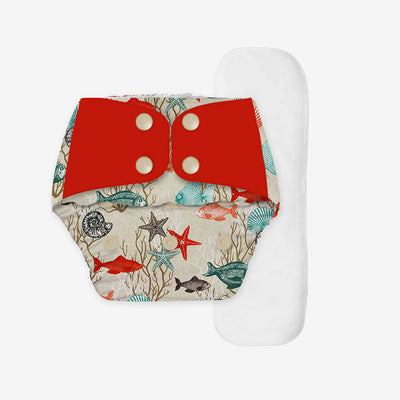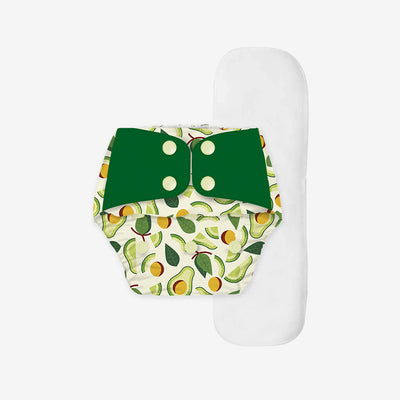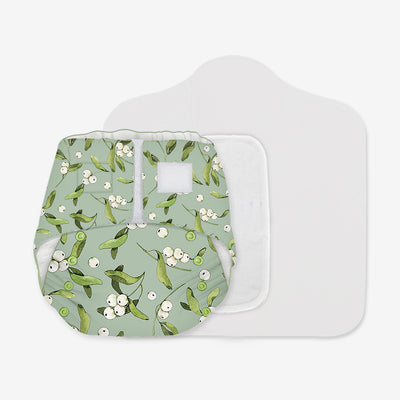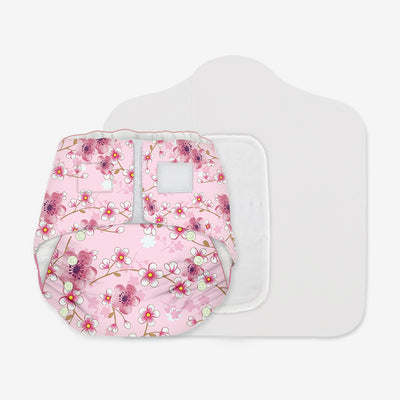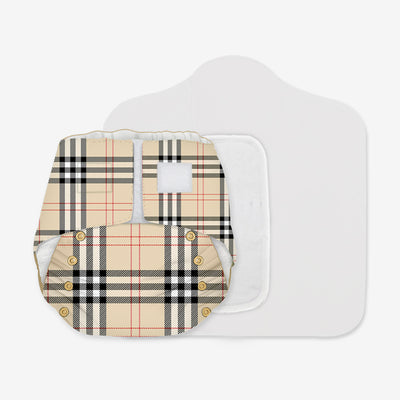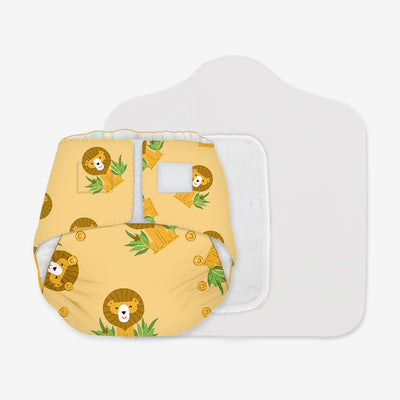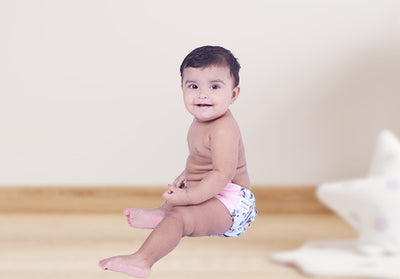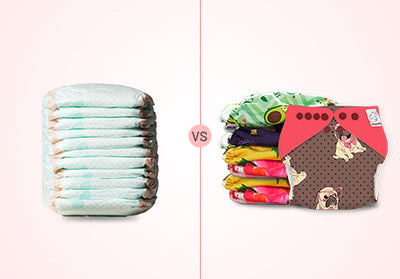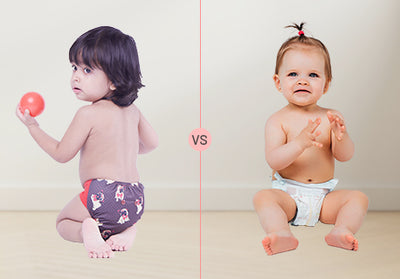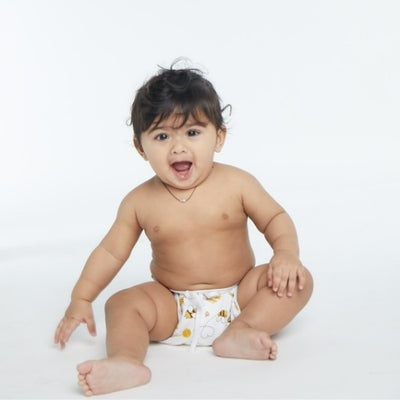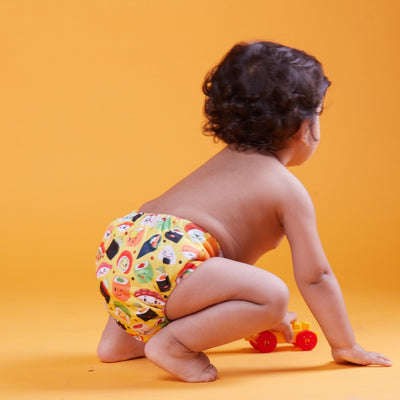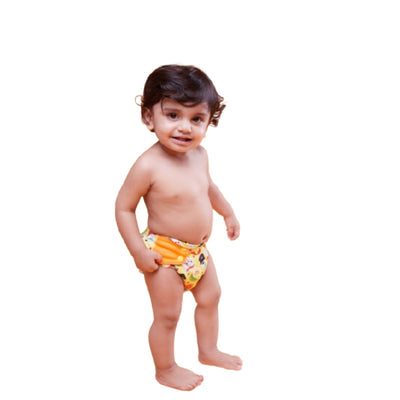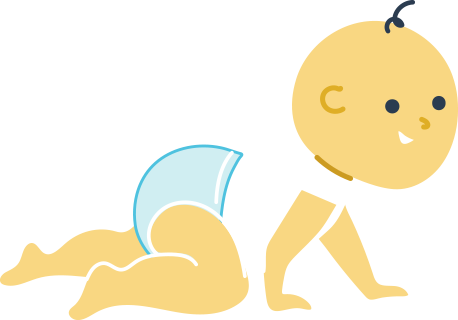Cloth diaper 101 – How to use cloth diapers?

Cloth diapering is one of the most controversial topics for discussion for parents who are raising babies. Honestly, most of the moms are scared of using cloth diapers. A couple of reasons parents are afraid of using reusable cloth diapers are increased burden of work as well as upfront charges. No worries! In this article, we will discuss cloth diapers in detail and it won't be scary any more for you to use for your grow
ing baby.
What are cloth diapers?
When we think of cloth diapers, the very first image that comes to our minds is a geometrically square piece of cloth with safety pins to fix it at the place. Gone are the days when such diapers were in use. Now, cloth diapers have turned out to be cute and easy to use products.
Cloth diapers are one-size diapers made of gentle fabric for the baby's delicate and sensitive skin. It has a waterproof outer layer and buttons to keep the diapers fixed in place. A cloth diaper is a reusable, money-saving and secure product for your child. These one-size diapers are adjustable and can be used for your baby from birth to potty training.
Why cloth diapers?
The best and the primary reason for using cloth diapers is that they are organic and natural, free from any chemical. Second, it can be more comfortable for the baby than disposable diapers because the fabric itself is comfortable. Next, the all-natural material is suitable for babies and is good for the environment. Cloth diapers are economical as well because you are not buying diapers all the time. Beyond the economic aspect, you must be concerned about the baby's comfort and this one reason is enough to acquire reusable cloth diapers.
Types of cloth diapers
There are a handful of cloth diapers for choice, which could be both great and overwhelming for new parents. The good idea is to try a few different ones before stocking on the one that suits you. Following are the descriptions of various kinds of diapers to give a brief introduction of each variety.
- All-in-One cloth diaper – It is similar to the disposable diaper. These are diapers with adjustable buttons so that it can grow as your child grows. It comes with two built-in interchangeable closure options which possess high absorbent quality material.
- All-in-two cloth diapers– These are similar to the all-in-one cloth diapers. The difference is that they come in two parts. One is the outer waterproof layer and the other absorbent insert that is attached to the outer layer.
- Pocket cloth diapers – A Pocket diaper is different from the above two variants as it has a pocket where you can add inserts into the bag.
- Fitted cloth diaper– This diaper does not have a waterproof layer; hence you have to get a diaper cover.
- Prefold cloth diapers– These are like fitted diapers, but they lack the clasps. These have numerous absorbent layers, but they must be worn under a diaper cover.
- Flat cloth diapers –These are similar to the original diapers. It has a single layer and must be paired with a diaper cover.
How to use cloth diapers?
Changing a cloth diaper is not much different than disposable diapers, except of course they are reusable so you need to properly close them before putting them away for a wash. Some of the diapers mentioned above may require assembling before you put it on the baby. They use velcro or snaps since they are adjustable. Snaps or velcro along the waistline are for adjusting waist size and along the front are to adjust size according to the babies’ comfort size. Cloth diapers need to be changed every 3 to 4 hours to avoid rashes on the baby. Some cloth diapers that use inserts (as mentioned above) can last upto 12 hours too.
How many diapers do you need?
You may need to change around 3 to 5 diapers per day depending on the frequency your baby wets the diaper. This frequency decreases as the baby gets older and ultimately is potty trained. Depending how frequently you will wash the diapers, you will need to stock at least for 2 days, if not more. If you use the cloth diapers carefully they will last for years.
How to store cloth diapers?
You should check that the diaper is dirty or just wet; it is easy if the diaper is merely wet. You can put the diaper in waterproof wet bags for cloth diapers. If the diaper is soiled and dirty, then there is an extra step. Knock the solids into the toilet and then transfer it to the wetbags. If the baby is breastfed, there must not be much volume of solids to dump into the toilet and it's all water-soluble. Hence, you can directly put them into the Waterproof wet bags to pre soak them before the wash.
It is better to buy hanging waterproof wet bags for cloth diapers as they take up less floor space. You can even hang them on door knobs, bathroom towel bar or any wreath hanger. It is advised to collect the diapers in waterproof wet bags for two or three days and then wash dry and re-use them. Say no to fabric softener as the chemical in the solution tends to resist urine over time.
Washing cloth diapers
Remove all poop and gunk from the diaper and rinse of the diaper with a little detergent.
For washing machine: Wash diapers separately from the rest of the baby's clothing. Dump all the diapers into the washing machine and run a short cycle of 20 to minutes with a little detergent. Now, turn the machine on and add a regular amount of detergent, run the second cycle. For hard water, add water softener. Before drying, check the drying guidelines on the diaper tags. Many must be air-dried, while others can be spin dried in the dryer at a low or medium setting.
For hand wash: Soak for 20 to 30 minutes. Rub the diaper well without using a brush. Rinse the diaper thoroughly and dry under the sun on the clothesline.
Related Blogs
Organic Cloth Diapers V/S Disposable Diapers – Which One Is Better!


